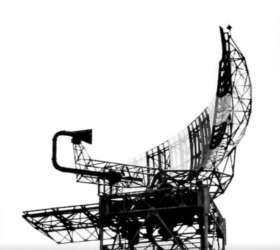Selenia ATCR-2/2TI
Description of the radar set, tactical-technical characteristics

Figure 1: ATCR-2 Antenna G7
| Specifications | |
|---|---|
| frequency: | 1 250 MHz … 1 350 MHz
(L-Band) |
| pulse repetition time (PRT): | |
| pulse repetition frequency (PRF): | triple staggered |
| pulsewidth (τ): | |
| receive time: | |
| dead time: | |
| peak power: | 2 MW |
| average power: | |
| instrumented range: | 300 km |
| range resolution: | |
| accuracy: | |
| beamwidth: | 1.25° |
| hits per scan: | |
| antenna rotation: | 5-10 |
| MTBCF: | |
| MTTR: | |
Selenia ATCR-2/2TI
The ATCR-2 (Air Traffic Control Radar) is an early high power, operating in L-band, surveillance ATC-radar both for en-route and terminal area control. The ATCR-2 basic version was produced at the beginning of the 60's. It is normally supplied with 2 channels which can operate simultaneously in frequency diversity, and an antenna that produced two antenna patterns to reduce the influence of fixed clutter without degrading low coverage. The waveguide includes a switchable polarization from linear to circular reducing the effect of rain.
The version ATCR-2T (“Transistorized”) was equipped with an improved receiver and a revolutionary digital double delay canceller (MTI) and video integrator. As it was fitted with an additional low-noise parametric preamplifier, the radar got the designator ATCR-2TI (“Improved”).
About 20 sets of this type of radar were built and used in Italy, Great Britain, Switzerland, Norway, Sweden, South-Africa and India until the beginning of the 70s (partially 80s). The radar ATCR-2T was named PS-810 in the Royal Swedish Air Force.
